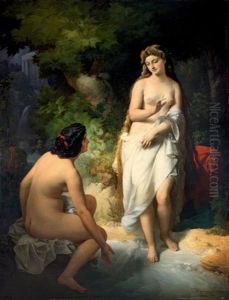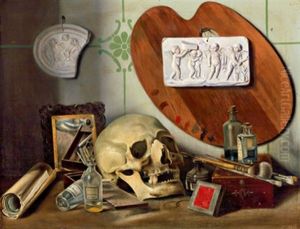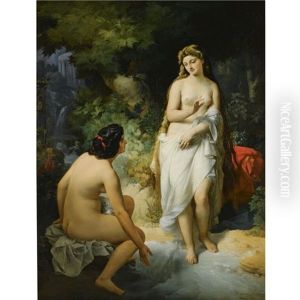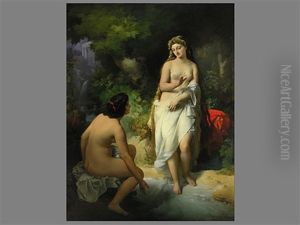Nandor Rakosi Paintings
Nandor Rakosi was a distinguished Hungarian graphic artist and painter, born in 1908. His life and career spanned a period of significant political and social upheaval, which deeply influenced his artistic expression. Rakosi's early years were spent in Hungary, where he developed a passion for art. Despite the lack of detailed records about his personal life and early education, it is known that he emerged as a significant figure in the Hungarian art scene during the mid-20th century.
Rakosi's artistic oeuvre is characterized by a versatile use of media, including painting, drawing, and graphic art. He was particularly known for his contributions to graphic arts, where his skillful etchings and lithographs garnered attention. His works often reflected the tumultuous era he lived in, with themes that ranged from the struggles of the common people to the complexities of human emotions. Rakosi's style evolved over the years, showing influences from various art movements of the 20th century, yet he maintained a unique voice that was reflective of his perspectives and experiences.
Throughout his career, Rakosi exhibited his works in numerous galleries and exhibitions, both in Hungary and internationally. Despite facing the challenges of working under the restrictive conditions of the time, including the impact of World War II and the subsequent Soviet influence in Hungary, Rakosi's art continued to resonate with audiences. His ability to capture the essence of his subjects with both realism and emotion made his works compelling to a wide audience.
The details of Nandor Rakosi's later life and death are not well-documented, which is not uncommon for artists of his time, especially those who lived through periods of political instability. However, his contributions to the field of art have left a lasting legacy. Today, Rakosi's works are held in various collections and continue to be appreciated for their historical significance and artistic merit. His life and art remain a testament to the resilience of creative expression amidst the challenges of the 20th century.





